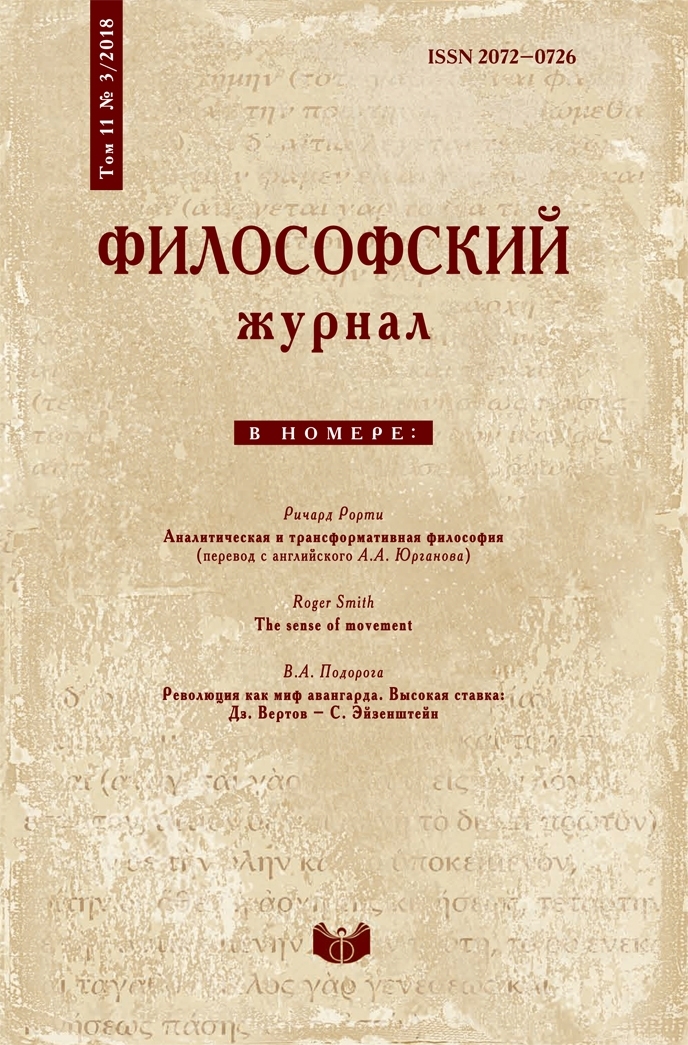Revolution as the avant-garde myth. The odds are long: Dziga Vertov and Sergei Eisenstein
DOI:
https://doi.org/10.21146/2072-0726-2018-11-3-121-136Keywords:
revolution, avant-garde, myth, event number, human eye, matterAbstract
This paper offers a study of two attitudes to revolution as embodied in the figures of Dziga Vertov and Sergei Eisenstein, both of whom were contemporaries of the Russian Revolution. This is done against the background of some influential writings on revolution, including those by Alexis de Tocqueville, François Furet and Elias Canetti, who discuss, among other things, whether a revolution is something practically feasible or it can only be the object of myth or staging. For all the fierce debate between them, both Vertov and Eisenstein championed illusion (or myth). It can be shown, however, that their respective positions differed significantly. Eisenstein held that the role of art in revolution was enormous: he insisted that creating a mythography for the revolution was of greatest importance, while the problem of historical truth is insignificant, seeing as what matters is not what did actually happen but what had to happen. It is the viewer's consciousness being involved into the visual for the sake of transition into another state which is important, not alienating him from the visual. Vertov, on the other hand, started from the conviction that the revolution needs no special mythography and needs be shown and seen here and now. He understood his task as one of filming the event or the phenomenon as it is, reducing the time of actual photography to a brief moment so as to take things happening 'by surprise'. Hence the growing role of the camera as something capable of catching on the reality from standpoints inaccessible to humans and thus unveiling the invisible and penetrating to the depth of the material world. In case of Eisenstein, the specific 'technical' element of his cinematography was his handling of numbers, which amounted to manipulating mass consciousness, whereas Vertov's 'kinoks' strove to create a national identity.






